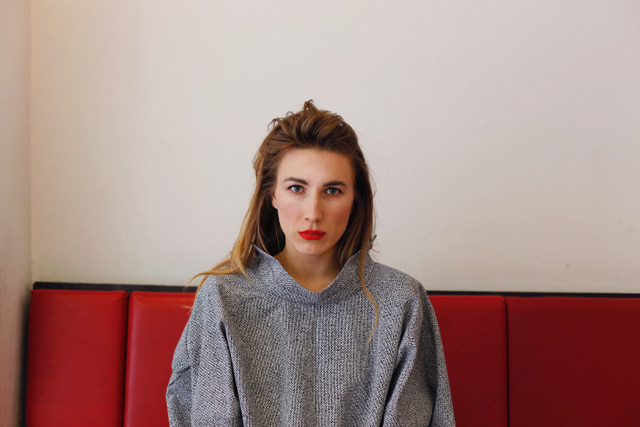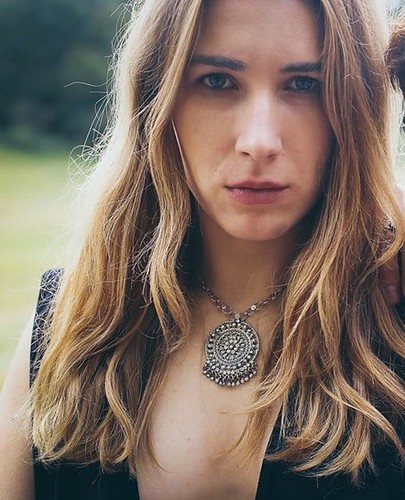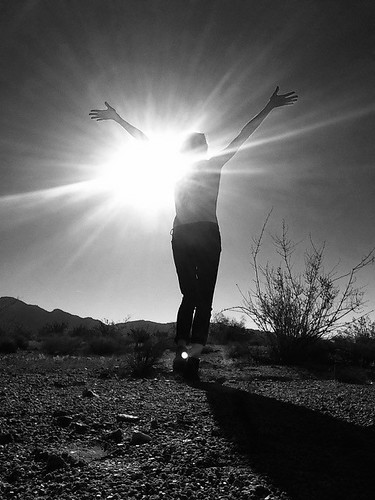FEATURES|THEMES|People and Personalities
Gender as an Act: Sarah Wessendorf on Buddhism and Non-binary Identities
Like most, I have been boxed in the gender identity I was assigned at birth, in my case that of a man. I remember absorbing and replicating notions of masculinity particularly during my teen years. I, as many of my peers in other cultures, learned that girls grow into women and boys into men. We end up, consciously or unconsciously, acting out and replicating those gendered roles. Some roles of “men” or “women,” as long as they are taken on authentically, can be fulfilling and productive. Still, many of us know, deep down, that there are actually many ways of acting out gender, and that the culturally dominant ways of being a man or a woman are not necessarily the healthiest.
While I somehow emerged relatively unscathed from an all-boys boarding school, I like to explore, in my own amateur way, how masculinity might be reimagined for a healthier vision of manhood, both in Asia and the West. But what would happen when we let go of the dichotomy of “man” and “woman” altogether? What implication does that have for a Buddhist community?
I spoke about this notion to Berlin-based actress Sarah Wessendorf, who defines herself as a “non-binary” person rather than the gender “woman” she was assigned at birth. According to Sarah, there will not be any immediate gender revolution or massive upheaval in the way people “act out” masculinity or femininity. Her (I use this pronoun for convenience) work with the Soka Gakkai International community in Berlin is simply to bring a concept of gender freedom, fluidity, and even playfulness to public awareness that could, as time goes on, revolutionize how we conceptualize gender roles.
The non-binary lifestyle has nothing to do with sexual orientation. Rather, it simply denotes “someone who does not identify as a man or a woman, or solely as one of those two genders.” (Teen Vogue) There is no such thing as looking non-binary, or behaving in a non-binary way. It also does not dispute that the male and the female have different biological reproductive functions. Rather, being a “man” or “woman” is simply seen as clothing, worn and discarded according to preference.
Sarah grew up on a theater stage in Hamburg, a relatively conservative city. She was in Los Angeles in 2017 when she encountered the teachings of Nichiren (1222–82) through Soka Gakkai and decided to become a practicing Buddhist. On her return to Germany she joined the Soka Gakkai community in Berlin, and about half a year ago, she was asked whether she wanted to practice in the men’s group or the women’s group. In response, she decided to create a third group that welcomed all those who didn’t want to have to define themselves as a man or woman to practice.
Cisgender people—those whose gender identity aligns with the one they were assigned at birth—who make up the majority of the population in heteronormative cultures, are welcome to join the group but must understand that gender roles, including behavior, habits of interaction, dress, and deportment, do not define the identity of the non-binary group’s members.
For Sarah, her acting career has put her in a unique position to realize that a gender is just as scripted, learned, and donned like any other role she has played on stage. “I’m in my role completely, as an actor, but when I’m out of that role I wouldn’t want to be referred to as that character’s name,” she adds. She also relates this to Buddhism, where all beings are spiritually equal and share the same Buddha-nature. “Everything else is adornments,” she says.
“I don’t think that non-defined people should take offence at well-intentioned compliments like ‘You’re a beautiful woman’ (which my partner says to me and then worries if he’s made a mistake). I do not agree with people who insist on being called ‘they’ all the time. Yet not everyone understands that the notion of gender (man or woman) is as much of a role as our careers or other identities. If Buddhism is really about no-self and getting back to Buddha-nature, then surely gender roles are as illusory as the other ways in which we categorize ourselves?”
Sarah acknowledges that the segregated meditation groups at Soka Gakkai Germany are a legacy of the medieval Japanese context in which Nichiren started his school. At that time, women not even able to participate in Dharma classes, but Nichiren took the brave step of allowing women into his sermons (albeit separate from the men). Hence the gender separation emerges from what once was an admirable context. Sarah is simply proposing that to match contemporary sentiment and to stick true to the Buddhist principles that gender is ultimately illusory, further steps need to be taken.
Sarah is currently working on a film featuring transgender people titled Wenn Eisvögel Feuer fangen, and says that acting in this film is a learning journey for her about how she re-imagines gender roles as much as any member of her Nichiren congregation joining her non-binary group. In the Vimalakirti Sutra, a goddess transforms Shariputra, the Buddha’s right-hand-man-turned-butt-of-jokes, into a woman, declaring: “If the Reverend [Shariputra] could again change out of the female state, then all women could also change out of their female states. All women appear in the form of women in just the same way as the Reverend appears in the form of a woman. While they are not women in reality, they appear in the form of women. With this in mind, the Buddha said: ‘In all things, there is neither male nor female.’”
This is the deepest truth of Mahayana Buddhism, even if Buddhism has had to adjust itself to the societies into which it diffused, each with their own gender-normative cultures. Sarah is not subverting anything except long-held societal biases and assumptions about the roles of people who see themselves as “men” or “women.” Indeed, a more comprehensive discussion about the non-binary, non-defined mindset may well help inform how Buddhists should engage with gender issues. Conversely, Buddhism seems philosophically well-positioned to have a dialogue with the future of gender and how it can be played around with for the benefit of everyone—men, women, and all others somewhere along the spectrum.
“It was a long process to talk with my group about what I wanted, and reassuring them that this would help and not hinder our Dharma practice. It took me lots of patience and time. In a way it is sad, since I had never thought so much about gender than when I became a Buddhist, since I initially thought that Buddhism transcended all gender notions. It’s not quite the same on the ground. Still, what I’m doing is not splitting apart the community. It’s bringing people together.”
See more
9 Things People Get Wrong About Being Non-Binary (Teen Vogue)
Related features from Buddhistdoor Global
Buddhistdoor View: Let Water Flow Naturally—Cultivating Acceptance and Reducing Prejudice
Beyond Gender: Seeking the Sublime in Sacred Art

















